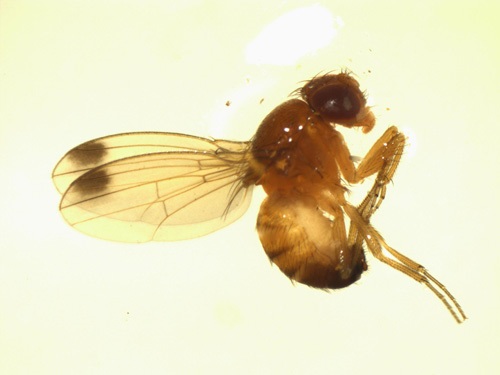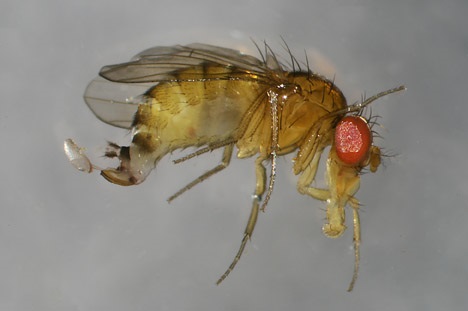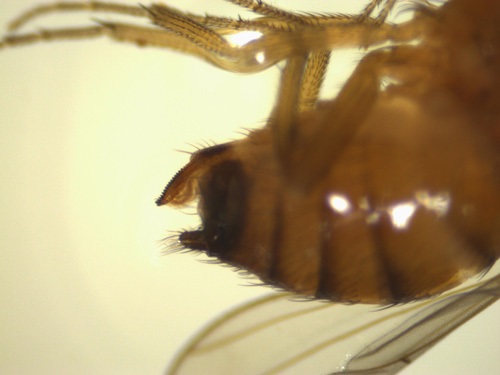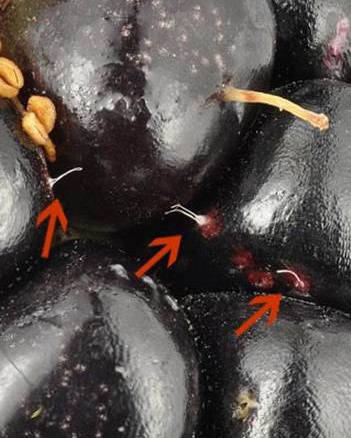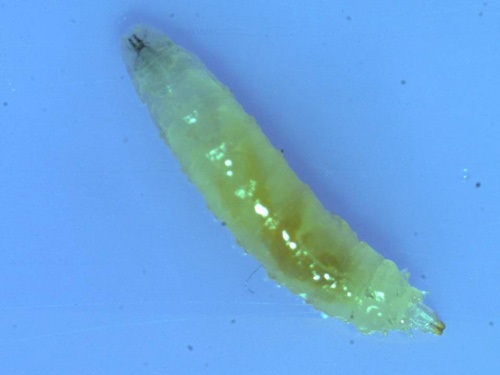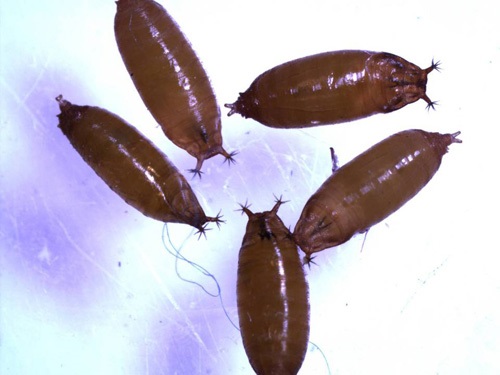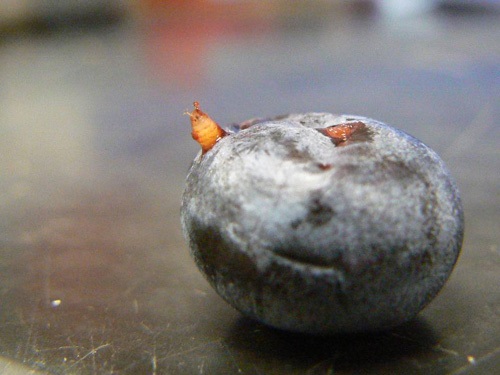Identification of spotted wing drosophila
Learn how to identify the adult, egg, larvae and pupae stages of the spotted wing drosophila.
Introduction
The SWD adults and larvae are very similar in appearance to the common vinegar fly normally associated with over-ripe, decaying or damaged fruit. They are not closely related to the much larger fruit fly maggots found in fruit, such as the apple maggot, the blueberry larvae, and the cherry fruit fly.
Adults
Adult SWD are small (2–3 mm), with red eyes and short stubby antennae. The abdomen is a pale yellow or brown and marked by dark brown complete unbroken bands or horizontal stripes.
- Males have a distinct black spot towards the tip of each wing and short, stubby antennae. The front feet have dark combs on the first and second segment, with 3 to 6 "teeth" each (Figure 1).
- Females are slightly larger than males and lack spots on wings. Females have, a saw-like ovipositor, with a serrated edge that is darker than the rest of the ovipositor (Figure 2 & 3).
Eggs
SWD eggs are laid under the skin of ripening fruit. They are translucent white, elongate, and about 0.6 mm long x 0.18 mm wide. Each egg has a pair of thread-like "breathing tubes" that protrude from the oviposition puncture and are visible on the fruit surface (Figure 4).
Larvae
Larvae are found inside the fruit. SWD larvae pass through three instars, each instar becoming progressively larger. Third instar larvae are up to 4 mm in length, white, cylindrical, and tapered at both ends. There is no head capsule. With magnification, dark mouth hooks at the front end and a pair of tan caudal spiracles at the rear end are visible (Figure 5). A single fruit may be infested with multiple larvae. After maturing, the larvae partially or completely exit the fruit to pupate. Larvae must be reared to adults for positive identification.
Pupae
SWD pupae are cylindrical brown, and approximately 3 mm in length (Figure 6). Pupae have, two stalks with small finger-like projections on one end which sometimes protrude from infested fruit (Figure 7).
